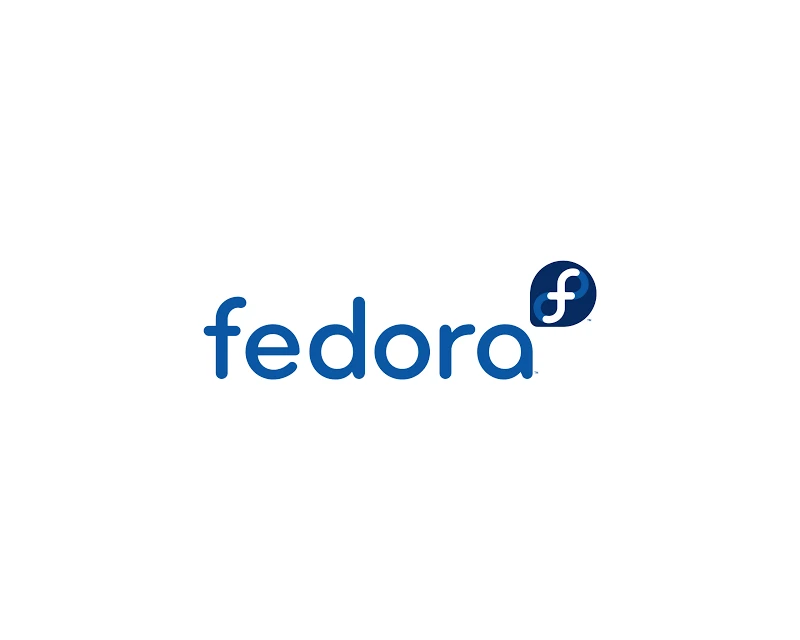Fedora Linux: A Comprehensive History and Explanation
Introduction: The Purpose of Fedora Linux
Fedora Linux is a cutting-edge, community-driven Linux distribution that serves as a testbed for new technologies and innovations in the open-source ecosystem. Developed and sponsored by Red Hat, Fedora is designed to showcase the latest advancements in the Linux kernel, software, and development tools, often serving as a precursor to features that later appear in Red Hat Enterprise Linux (RHEL). Fedora’s primary purpose is to provide a robust, secure, and flexible platform that caters to developers, system administrators, and enthusiasts who seek to explore the latest in open-source technology.

Origins: The Birth of Fedora from Red Hat Linux
The Fedora Project was born out of Red Hat’s decision in 2003 to split its Linux distribution into two separate entities: Red Hat Enterprise Linux (RHEL) and Fedora. Before this split, Red Hat Linux was a popular distribution that served both enterprise customers and the general open-source community. However, as Red Hat’s business model evolved, the company recognized the need to differentiate its enterprise offering from the more rapidly evolving open-source community distribution.
Red Hat Linux was discontinued after version 9, and Red Hat Enterprise Linux was introduced as a commercially supported, stable, and long-term platform for enterprise customers. Fedora was created to take over the role of the community-driven distribution, where innovation and the adoption of new technologies could occur at a faster pace.
The name “Fedora” was chosen to reflect the project’s roots in Red Hat, as the red fedora hat is a symbol associated with the company. The Fedora Project was officially announced in September 2003, and Fedora Core 1, the first release, was made available in November of the same year.
The Fedora Project: Community and Governance
The Fedora Project is governed by a community-driven model, with Red Hat providing sponsorship and support. The project is overseen by the Fedora Council, which is responsible for setting the overall direction and goals of the distribution. The Council includes representatives from various Fedora sub-projects, as well as community-elected members.
Fedora’s development is guided by the “Four Foundations,” which are:
- Freedom: Emphasizing the importance of free and open-source software, Fedora ensures that all software included in the distribution meets the criteria for free software.
- Friends: The Fedora community is built on collaboration and mutual respect, with contributors working together to create a high-quality distribution.
- Features: Fedora is known for integrating the latest features and technologies, often serving as the first distribution to introduce new advancements in the Linux ecosystem.
- First: As a leading-edge distribution, Fedora prioritizes being first to offer new software and technologies, making it a popular choice for developers and early adopters.
The Fedora Project is structured into several working groups and sub-projects, each focusing on different aspects of the distribution, such as packaging, documentation, security, and community outreach.
Fedora’s Release Cycle: Rapid Innovation with Stability
Fedora operates on a relatively rapid release cycle, with a new version typically released every six months. This frequent release schedule allows Fedora to incorporate the latest software, kernels, and technologies, making it a showcase for cutting-edge developments in the open-source world.
Each Fedora release goes through several phases of development:
- Rawhide: The Rawhide branch is Fedora’s rolling development version, where the latest software packages are integrated and tested. It is considered unstable and is primarily used by developers and testers.
- Branched: A few months before a new release, the current development branch is branched off from Rawhide. This branched version undergoes testing and stabilization, leading up to the release of the next version of Fedora.
- Final Release: After extensive testing and bug fixing, the final release is made available to the public. This version is considered stable and is suitable for general use.
Each Fedora release is supported with updates, including security patches, for approximately 13 months. Users can upgrade from one release to the next using the built-in package management tools.
Fedora Editions: Tailored for Different Use Cases
Fedora is available in several editions, each designed to meet the needs of different user groups. These editions include:
- Fedora Workstation: Aimed at developers and desktop users, Fedora Workstation is a polished, easy-to-use operating system that includes the latest GNOME desktop environment, developer tools, and applications. It is ideal for software development, general desktop use, and exploration of new technologies.
- Fedora Server: Designed for server administrators, Fedora Server provides a powerful, flexible, and secure platform for running server applications. It includes tools for managing server roles, such as web servers, database servers, and file servers, and emphasizes stability and performance.
- Fedora IoT: Targeted at Internet of Things (IoT) devices, Fedora IoT offers a minimal, lightweight platform optimized for running on embedded systems. It includes tools and features for managing and deploying IoT applications securely and efficiently.
- Fedora Silverblue: A variant of Fedora Workstation, Fedora Silverblue is an immutable desktop operating system that emphasizes atomic updates and rollback capabilities. It is designed for container-based workflows, making it a great choice for developers working with containerized applications.
In addition to these main editions, Fedora also offers Spins and Labs, which are alternative versions of Fedora tailored for specific purposes. Spins provide different desktop environments, such as KDE, Xfce, and LXQt, while Labs include specialized software collections for tasks like gaming, scientific computing, and design.
Fedora’s Impact on the Linux Ecosystem
Fedora’s role as a leading-edge distribution means that it often serves as an incubator for technologies that later become standard in other distributions, including Red Hat Enterprise Linux. Some of the significant contributions Fedora has made to the Linux ecosystem include:
- Systemd: Fedora was one of the first major distributions to adopt systemd as its init system, replacing the traditional System V init. Systemd brought significant improvements in boot speed, service management, and system configuration.
- Wayland: Fedora has been at the forefront of the transition from the X Window System to Wayland, a modern display server protocol that offers better performance, security, and support for modern hardware.
- Flatpak: Fedora has been a strong supporter of Flatpak, a framework for distributing and running sandboxed desktop applications. Flatpak allows applications to be installed and run on any Linux distribution, regardless of the underlying system libraries.
- Modularization: Fedora introduced the concept of modularization, allowing users to choose different versions of software packages and environments to suit their needs. This flexibility is particularly useful for developers and system administrators who require specific versions of software for their workflows.
These and other innovations have made Fedora a significant force in the open-source world, driving the adoption of new technologies across the Linux ecosystem.
Security in Fedora: A Focus on Safety and Integrity
Security is a core focus of the Fedora Project, with multiple layers of protection built into the distribution. Fedora adheres to strict packaging and development guidelines to ensure that software is secure and reliable. Some of the key security features in Fedora include:
- SELinux (Security-Enhanced Linux): Fedora includes SELinux by default, providing mandatory access control (MAC) to enhance system security. SELinux policies help to prevent unauthorized access to system resources and mitigate the impact of potential vulnerabilities.
- Automatic Updates: Fedora provides timely security updates through its package management system, ensuring that users can quickly apply patches and protect their systems from emerging threats.
- RPM Package Signing: All official Fedora packages are signed with cryptographic keys, allowing users to verify the integrity and authenticity of the software they install.
- FirewallD: Fedora uses FirewallD as its default firewall management tool, offering a flexible and easy-to-use interface for configuring network security.
These security measures, combined with Fedora’s commitment to open-source principles, make it a trusted platform for both development and production environments.
Fedora’s Contribution to Red Hat Enterprise Linux (RHEL)
One of Fedora’s key roles is to serve as the upstream source for Red Hat Enterprise Linux (RHEL). Technologies and features introduced in Fedora are often refined and stabilized before being included in RHEL, which is designed for enterprise use with long-term support and rigorous testing.
This relationship benefits both projects: Fedora can innovate rapidly and explore new ideas, while RHEL gains from Fedora’s innovations, ensuring that enterprise customers receive a stable and reliable platform.
Community and Governance: The Open Fedora Community
The Fedora community is vibrant and diverse, consisting of developers, testers, documentation writers, designers, and users from around the world. The project is governed by the Fedora Council, which provides overall leadership and coordination. The Council is supported by various committees and special interest groups (SIGs) that focus on specific aspects of Fedora, such as packaging, marketing, and internationalization.
The Fedora community operates on principles of transparency, collaboration, and meritocracy, with decisions made through consensus and open discussion. Contributors are encouraged to participate in all aspects of the project, from development to outreach.
Fedora’s Release History: Key Milestones
Since its inception, Fedora has undergone numerous iterations, each introducing new features and improvements. Some of the significant milestones in Fedora’s release history include:
- Fedora Core 1: Released in November 2003, it was the first release of Fedora following the split from Red Hat Linux. It laid the foundation for Fedora’s role as a cutting-edge distribution.
- Fedora Core 4: Released in June 2005, it introduced SELinux as a default feature, marking a significant step in enhancing system security.
- Fedora 7: Released in May 2007, it merged the Core and Extras repositories, simplifying package management and marking the transition from Fedora Core to simply “Fedora.”
- Fedora 15: Released in May 2011, it was the first major distribution to include GNOME 3, introducing a new user interface and workflow.
- Fedora 22: Released in May 2015, it marked the introduction of the three main Fedora editions: Workstation, Server, and Cloud, reflecting the distribution’s focus on different use cases.
- Fedora 33: Released in October 2020, it introduced Btrfs as the default file system for Fedora Workstation, offering improved data integrity, snapshots, and storage management features.
These releases, among others, highlight Fedora’s commitment to staying at the forefront of technological advancements while providing a stable and user-friendly platform.
Fedora’s Challenges and Future Directions
As a leading-edge distribution, Fedora faces unique challenges, including the need to balance innovation with stability. The rapid pace of development can sometimes lead to issues with software compatibility or stability, particularly for users who require a rock-solid platform for production environments.
However, Fedora’s commitment to its core principles and its strong community support ensure that it continues to evolve and adapt to the needs of its users. The future of Fedora is likely to see continued innovation in areas such as containerization, security, and cloud computing, as well as further integration with emerging technologies like artificial intelligence and machine learning.
Conclusion: The Legacy and Impact of Fedora Linux
Fedora Linux has established itself as a leading distribution in the Linux world, known for its commitment to innovation, freedom, and community collaboration. Its role as an upstream source for Red Hat Enterprise Linux, combined with its focus on delivering the latest technologies to users, has made Fedora an influential force in the open-source ecosystem.
Whether you are a developer looking to explore the latest tools, a system administrator seeking a flexible and secure platform, or an enthusiast eager to be on the cutting edge of technology, Fedora offers a powerful and versatile environment that caters to a wide range of needs. As Fedora continues to evolve, it will undoubtedly remain a key player in the ongoing development of Linux and open-source software.





